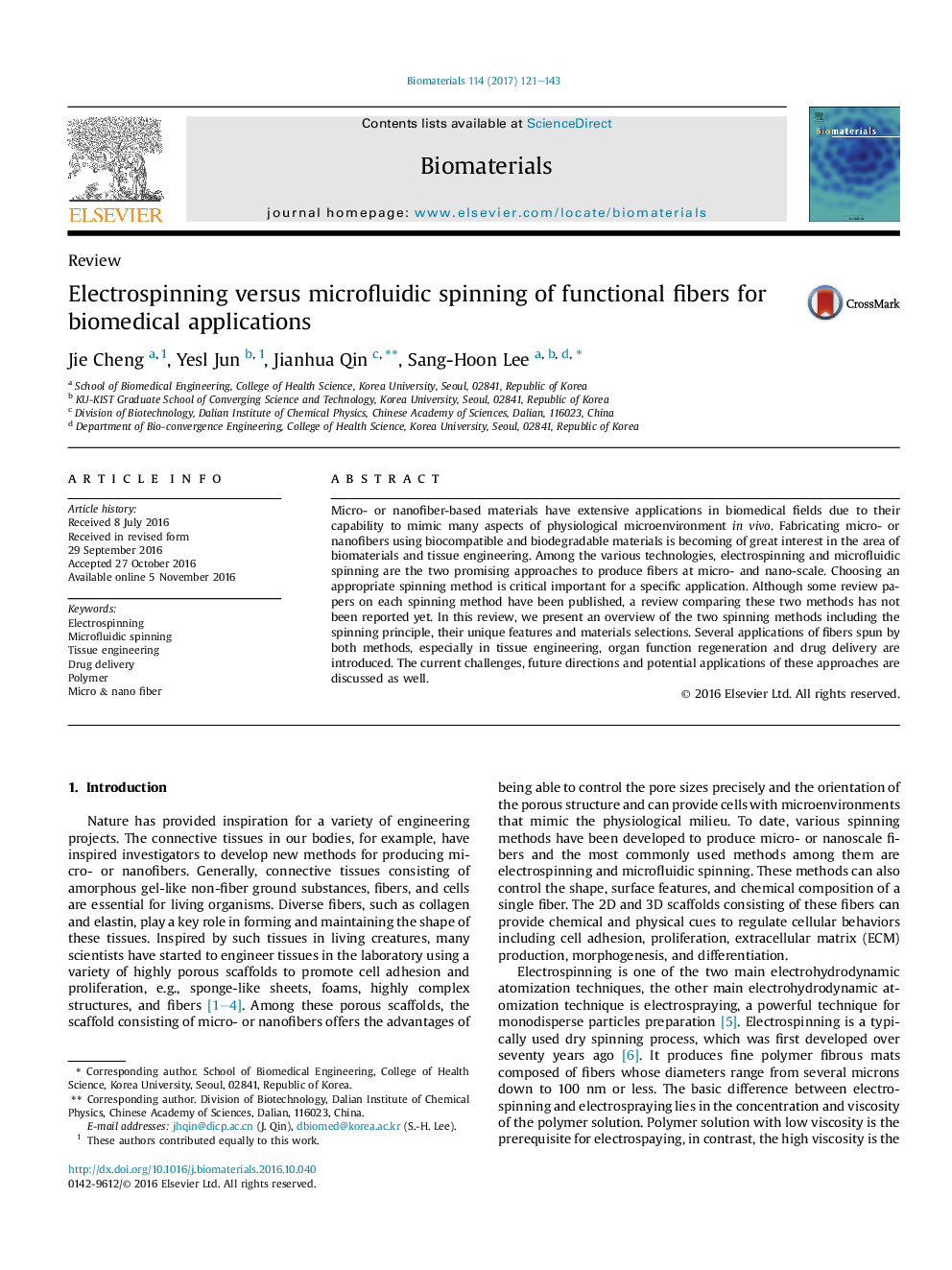| Article ID | Journal | Published Year | Pages | File Type |
|---|---|---|---|---|
| 6451019 | Biomaterials | 2017 | 23 Pages |
Micro- or nanofiber-based materials have extensive applications in biomedical fields due to their capability to mimic many aspects of physiological microenvironment in vivo. Fabricating micro- or nanofibers using biocompatible and biodegradable materials is becoming of great interest in the area of biomaterials and tissue engineering. Among the various technologies, electrospinning and microfluidic spinning are the two promising approaches to produce fibers at micro- and nano-scale. Choosing an appropriate spinning method is critical important for a specific application. Although some review papers on each spinning method have been published, a review comparing these two methods has not been reported yet. In this review, we present an overview of the two spinning methods including the spinning principle, their unique features and materials selections. Several applications of fibers spun by both methods, especially in tissue engineering, organ function regeneration and drug delivery are introduced. The current challenges, future directions and potential applications of these approaches are discussed as well.
